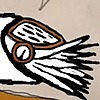HOME | DD
 Qilong — The Venomous Mammal
by
Qilong — The Venomous Mammal
by

Published: 2014-03-19 00:17:47 +0000 UTC; Views: 4127; Favourites: 96; Downloads: 0
Redirect to original
Description
Not all mammals are cute or fluffy.The solenodon (Solenodon paradoxus) is one of few mammals about as fearsome as they are small. Solenodons eat a wide variety of things, but the most astonishing factoid one usually hears is that they are venomous. Their saliva is toxic, and there are grooves on the sides of its front teeth that help deliver this into bites. The teeth are very snake like in other fashions, too: the rear edges have deep keels, which aid in deep biting without as much force being delivered, good for an animal that hunts underground.
Related content
Comments: 22

that's why I love shrews and simlars, they're like venomous micro-wolves
👍: 0 ⏩: 0

Remind me of elephant shrews. Little guys are beautiful. Once dropped my lunch when one came up next to me in the bushvelt, it lifted its little long snout and gave of a territorial shriek. We both froze at the sight of one another (felt like fools). I think they must also have that nose bone to be able to move their snout in that manner. I don't think they are short sighted and their obsession with food is no less than their continual OCD in keeping their escape "path" free from debrie (derbie?). Just leave a leaf in their path and wait, he/she will come by and unceremoniously yank the leaf from the path.
👍: 0 ⏩: 0

i often find dead shrews in the wood, but only once have i seen a live one. you would think that having a venomous bite and an insatiable apatite would make these animals vicious superpredators, but their not. in attitude shrews are just fussy shortsighted mice with an obsession with food. i think its important to keep animals like shrews in mind when interpreting animal remains.
👍: 0 ⏩: 1

Shrews can be amazing animals, and there are some utterly fantabulpous shrews out there. But solenodons aren't really shrews but something a little more primitive than a shrew or a mole, but related to both.
👍: 0 ⏩: 0

No need. Solenodon's primary biting muscles are the temporalis complix, rather than the masseters. Similar adaptations occur in sloths, where the loss of the complete arch occurs with more complete fusion of the skull. Arch helps dissipate stress away from the snout and from the masseter muscles. But those muscles are still there, just smaller.
👍: 0 ⏩: 1

I see. The only similar case that I've seen is in anteaters, but I guess that in it is because their weak mandibles, right?
👍: 0 ⏩: 1

Well, sloths have a gap, too. Also, pangolins. Loss of the arch means merely loss of a section of bone that, while it normally attaches muscle, is not needed there. The muscles are either reduced or moved. Mostly, it's about changes in which muscles are being emphasized, or a reduction entirely. And yes, in anteaters it's because they have weak buccal muscles.
👍: 0 ⏩: 0

Interesting how mammals are generally associated with being "cuddly" and "friendly" today when their skeletons are probably some of the most terrifying in the animal kingdom.
👍: 0 ⏩: 1

What are the projections coming out of the front?
👍: 0 ⏩: 1

The little projection is a special bone only solenodons have, called an os proboscis, or "nose bone," which is mobile and helps support cartilage of the snout and helps move the nose. They have very long noses.
👍: 0 ⏩: 2

Oh, that's pretty cool. Thanks!
👍: 0 ⏩: 1

It's a possible ancestor of the Rhinogradentia!
Well done skull by the way
👍: 0 ⏩: 1

Heh, rhinogrades. Sometimes I wish I was more into spec bio as some of you guys.
👍: 0 ⏩: 1

And I wish I would be able to understand everything about myo- and osteology you write ^^
Nobody is perfect
👍: 0 ⏩: 1

Everyone teaches everyone else. I prefer organic education. I am personally impressed with your grasp of diverse biologies, so we can agree we're evenly impressed
👍: 0 ⏩: 1





















